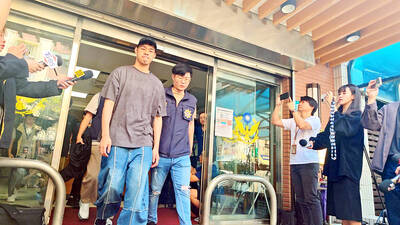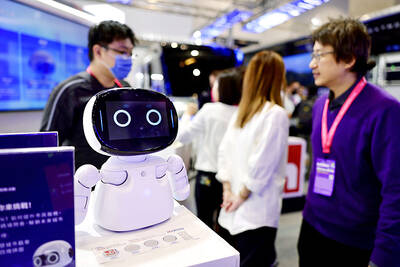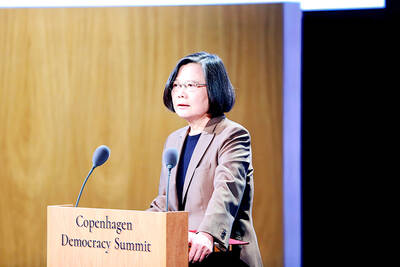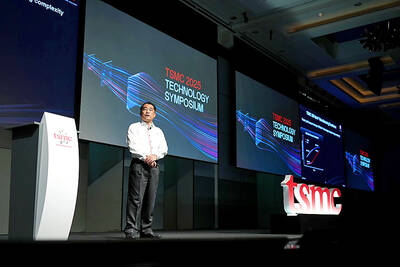There was a time when the worlds of luxury fashion and sportswear were content going their own separate ways.
Not anymore. Today, top-flight fashion houses such as Chanel or Hermes are just as likely to produce labeled sports gear, as Nike or Adidas are to sell sneakers specially created by famous designers.
Initiated about 10 years ago by pioneers such as France's Jean-Charles de Castelbajac, who teamed up with Rossignol, or Japanese designer Yohji Yamamoto's deal with Adidas, the phenomenon has proved popular in both business worlds.
Hip British designer Stella McCartney has a deal with Adidas until 2010, while the latest "marriage" prospect joins French luxury goods empire, PPR -- owners of Gucci and Yves Saint-Laurent -- with Puma.
Having been close to bankruptcy about 15 years ago, the German sportsgear maker has become a sought-after label, with style-conscious stars such as Madonna and Cameron Diaz sporting Puma apparel bearing the sleek and powerful big-cat logo.
Convinced it will become "an iconic brand" of luxury, PPR chief executive Francois-Henri Pinault has bought a 27 percent stake in Puma, the world's third-biggest sports items company behind Nike and Adidas.
And the French group says it plans to launch a full public takeover offer for the rest.
"The brand is the most glamorous of the market. The profit margins for its trainers [sneakers] are close to that for a luxury product by Gucci," said Eugenio Di Maria, of Sporting Goods Intelligence, a specialist publication on sports equipment.
Created around the first Olympic Games in Athens in 1896, sneakers gained respectability in the 1930s and 1940s.
Stars such as Marlene Dietrich or Greta Garbo slipped sports shoes on with their masculine-style suits.
Thirty years later, Rolling Rolling Stones frontman Mick Jagger would don a pair of sneakers on his wedding day.
At the start of the 1980s, sneakers became more technical when US basketball player Michael Jordan became involved in product endorsement and sports shoes gradually left the stadium to conquer the street.
Indeed, the sight of trendy young executives wearing sneakers with their smart work suits soon became a common sight, even in the leading fashion capitals of Paris or London.
Brands such as the tennis label Lacoste, le Coq sportif, dance wear company Repetto, or still, Reebok, Adidas and Nike took advantage of this swing towards sports wear worn as everyday street wear.
They expanded their product range, offering lines that were eagerly snapped up by die-hard lovers of sneakers.
But the trend equally inspired the big names of haute couture -- Chanel turned out labeled tennis shoes, as well as skis and a basket ball, naturally, complete with the house's iconic interlocking Cs.
Dior targeted golfers, while Hermes had its sights set on horseriders and British designer Alexander McQueen has just created a sports shoe for Puma, which will go on sale for more than 600 euros (US$811).
A pair of basic sports shoes sells for about 50 euros.
"While sales of sports shoes saw formidable growth between 1980 and 1995, they have tended to stagnate in volume and to lower in value in Europe for three years," Di Maria said.

FALSE DOCUMENTS? Actor William Liao said he was ‘voluntarily cooperating’ with police after a suspect was accused of helping to produce false medical certificates Police yesterday questioned at least six entertainers amid allegations of evasion of compulsory military service, with Lee Chuan (李銓), a member of boy band Choc7 (超克7), and actor Daniel Chen (陳大天) among those summoned. The New Taipei City District Prosecutors’ Office in January launched an investigation into a group that was allegedly helping men dodge compulsory military service using falsified medical documents. Actor Darren Wang (王大陸) has been accused of being one of the group’s clients. As the investigation expanded, investigators at New Taipei City’s Yonghe Precinct said that other entertainers commissioned the group to obtain false documents. The main suspect, a man surnamed

DEMOGRAPHICS: Robotics is the most promising answer to looming labor woes, the long-term care system and national contingency response, an official said Taiwan is to launch a five-year plan to boost the robotics industry in a bid to address labor shortages stemming from a declining and aging population, the Executive Yuan said yesterday. The government approved the initiative, dubbed the Smart Robotics Industry Promotion Plan, via executive order, senior officials told a post-Cabinet meeting news conference in Taipei. Taiwan’s population decline would strain the economy and the nation’s ability to care for vulnerable and elderly people, said Peter Hong (洪樂文), who heads the National Science and Technology Council’s (NSTC) Department of Engineering and Technologies. Projections show that the proportion of Taiwanese 65 or older would

Democracies must remain united in the face of a shifting geopolitical landscape, former president Tsai Ing-wen (蔡英文) told the Copenhagen Democracy Summit on Tuesday, while emphasizing the importance of Taiwan’s security to the world. “Taiwan’s security is essential to regional stability and to defending democratic values amid mounting authoritarianism,” Tsai said at the annual forum in the Danish capital. Noting a “new geopolitical landscape” in which global trade and security face “uncertainty and unpredictability,” Tsai said that democracies must remain united and be more committed to building up resilience together in the face of challenges. Resilience “allows us to absorb shocks, adapt under

Taiwan Semiconductor Manufacturing Co (TSMC, 台積電) yesterday said it is building nine new advanced wafer manufacturing and packaging factories this year, accelerating its expansion amid strong demand for high-performance computing (HPC) and artificial intelligence (AI) applications. The chipmaker built on average five factories per year from 2021 to last year and three from 2017 to 2020, TSMC vice president of advanced technology and mask engineering T.S. Chang (張宗生) said at the company’s annual technology symposium in Hsinchu City. “We are quickening our pace even faster in 2025. We plan to build nine new factories, including eight wafer fabrication plants and one advanced